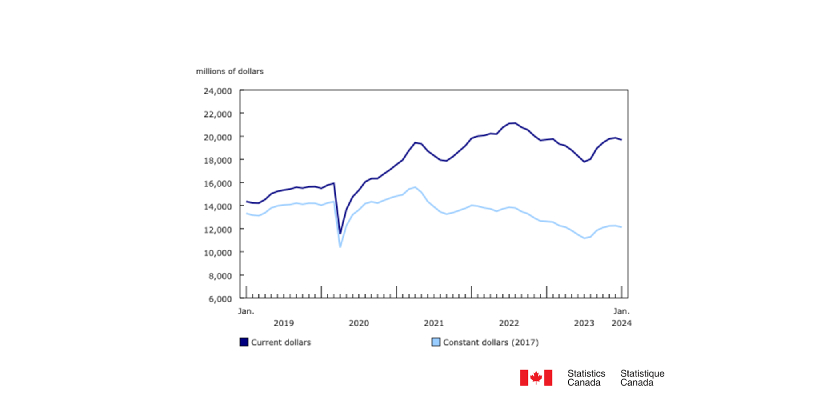Technical Q&A with ESA Technical Advisor Malcom Brown
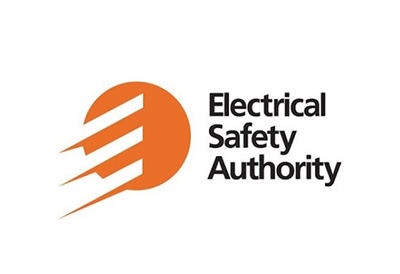
January 13, 2022
By Blake Marchand
This technical Q&A was done as part of ESA’s annual Licence Holder Meeting on November 18th. A recording of the entire meeting is available online. The technical Q&A began with a general overview of ESA’s top 5 changes provided to the 2021 Canadian Electrical Code by Malcom Brown. Following that, Brown goes through a number of questions submitted by LECs (Licenced Electrical Contractors), covering several topics, including EV energy management systems, GCFI and AFCI protection, nuisance tripping for washing machines and microwaves, smoke alarm requirements, and common inspection defects.
Brown and the ESA also stressed that LECs should reach out to their Technical Advisors whenever they have a question or require an interpretation.
The new code will come into effect May 2022 and is now available for purchase. The hardcopy is available for $233 and the PDF version for $199. The digital/PDF version is interactive and includes bulletin updates and interpretations. Which are also accessible through the CSA Community of Interest website.
Top 5 changes in the 2021 version of the Ontario Electrical Code:
There were about 330 subjects, 217 revisions, 9 improved interpretations, and 104 rejects or withdrawn rules.
“The new sections that we think are the top 5 for Ontario are:
Farm buildings housing livestock, series 22-800 – this is particularly impactful here in Ontario, it was driven by the office of the Fire Marshal and the Barn Fire Task Force, that’s what led to this proposal, and it will clarify the requirements for housing livestock.
There’s a new section on Energy storage systems, series 64-900 – They’ve been moved to the 64-900 rules as the technology evolves. Amended GCFI requirements for outdoor receptacles, Rule 26-407 – this will be a very impactful change. Currently, the code, for the most part, only requires receptacles outside associated with dwellings.
So, this rule will clarify, if I’m at a community centre or on street or somewhere like Canada’s Wonderland – outdoor receptacles would also have to be GFCI, so it’s really increasing safety for everyone in the general public.
There is a new rule – receptacles for mobile structures connected to transfer equipment, Rule 2-318. This was as a result of the coroner’s inquest in Ontario where somebody had needed to use temporary power when there was transfer equipment and it resulted in a fatality. This rule attempts to put a receptacle there for workers to use when they are working on these temporary structures.
Importantly, here in Ontario, there’s an amendment. There was a deletion of Table 39 in the Canadian Electrical Code, however, after review in Ontario we decided to keep Table 39 with some modifications.”
Following the Top 5 2021 Code changes overview by Brown, he answered several questions submitted by LECs.
If using an Electric Vehicle Energy Management System (EVEMS) would a 50A Breaker and #6 AWG Coper be acceptable to feed Electric Vehicle Supply Equipment (EVSE) with a nameplate marked 48A?
No, unless the EVEMS limits the maximum charging current to 40A, Rule 14-104.
“Typically, these systems we have been seeing, for the most part, are binary (on and off) if it does have technology – and I know technology is evolving all the time on this – that is able to throttle it back, that might be an option in the future. Right now, we can just follow Section 8,” explained Brown.
Rationale:
Section 8, specifically 8-104, limits the loading of equipment such as overcurrent protection and conductors for continuous loads to 80% of the defined value. EVSE is defined in 86-302 as a continuous load. The loading of 50A circuit is limited to 40A.
In complex residential properties, for example, 18 room student housing, what are some of the options available for providing smoke alarms as required by the building code?
Manufacturer’s instructions and Rule 8-304 may not permit interconnection of a large number of Smoke Alarms. The Ontario Fire Code should be consulted for other options such as a fire alarm system. “This is an interesting question,” said Brown, “because what we’re talking about is the number of smoke alarms that I can put on a circuit. Some of the manufacturer’s instructions limit the amount of smoke alarms that can be interconnected together, in addition Rule 8-304 may not permit interconnection of a large number of smoke alarms. In this case, 18. In order to really answer the question, the Ontario Fire Code should be consulted and perhaps there are other options such as fire alarm systems. But it’s not something ESA can really tell you, in terms of what sort of system you can put in.”
Rationale:
8-304 3) limits the maximum number of outlets on a branch circuit to 12 unless all outlets are connected loads and there are no convenience outlets like receptacles. Combination strobe/smoke alarms typically have a load of 1A or more and 32-200 a) prescribes that the smoke alarm circuit is at minimum required to have one light on the circuit which would reduce the number of smoke alarms by that load. This would, as a rule of thumb, limit the circuit to 11 smoke alarms. Bulletin 8-3-* further clarifies this type of installation and the design limits.
Why is it required to have an identified conductor (often people call it a neutral) when installing switches for 347V lighting installations?
Rule 4-022 2) requires the identified conductor be installed at each location of a manual or automatic control device for the control of permanently installed luminaires at a branch circuit outlet. (This is not limited to any one voltage).
Brown noted this was a change in the 2018 edition of the code.
Rationale:
The rule was revised to acknowledge that the common toggle switch is often being replaces with more advanced technology as they become available and more cost effective. Without the identified conductor available, the cost of replacing switches would be exponentially increased or some installer may utilize the bonding system, creating hazards in the process. Bulletin 4015-* provides an option to not include the identified conductor when a raceway is used in lieu of a cable. “We’re seeing a lot more smart devices, web activated switches, motion sensors that require an identified conductor to work, so there was a change in the National Electrical Code that also did this, that required the identified conductor to be installed, and there was a proposal in the Canadian code harmonized with this,” Brown added.
“This is to prevent people from, when they hook up the switch later, they don’t have the identified conductor there, and they may just end up thinking they can get away with connecting the white wire to the back of the box. So, we see the technology going that way and it’s providing an option for in the future.”
When replacing an existing non-GCFI split receptacle located in a kitchen, is a GFCI protected receptacle required to be installed as a replacement?
No. Notwithstanding Rule 26-704, GFCI protection shall not be required, as Split receptacles are not available with GFCI protection. However, it is recommended that Split receptacles be replaced with GFCI protected receptacles, as per the Bulletin 26-29-*. Flash notice 19-28-FL provides additional details.
What are a few current common defects in both commercial and residential installations?
12-610 Armored cable, anti-shorts required
02-034 One conductor per single lug – “I think this one is often misunderstood because there are lugs approved for multiple wires, so some panels you’ll go into are shouldered and you can put wires on both sides of the screw. But other panels only accept a single conductor.”
12-3014 Accessibility of junction boxes
26-656 AFCI required for branch circuits
10-606 Reducing washer bonding – “This was a change in the previous code and probably why its high on the defect lists. When you’re using the reducing washers (or as well call them, doughnuts) before we used to accept them as bonding, but the code changed and clarifies it as: If I’m going from a 1” knockout down to a 1⁄2” knockout, I know have to put a bonding bushing on there to bond the pipe, if I’m using that as my bonding method.”
Could we get more clarity on running boards and the distance a wire needs to be from it?
Rule 12-514 provides direction on the installation of running boards – this rule is updated in the 2021 code.
“If I’m in an open area I do need mechanical protection,” said Brown, “But I believe this question was specific to, ‘how far away can I put this wire from this running board?” Brown is referring to the below diagram and the running board in the image to the right. “Right now, I believe inspectors are using judgement to see if its protected. The good news is, there’s an update on this rule in the 2021 code and we’ll be starting training on that. So, stay tuned on that and I think it’ll get more clear and make more sense.”

Can we clarify receptacles in built in millwork for non-appliance use? Built in Ikea cabinet floor lighting power?
Rule 26-720 h) does not permit receptacles to be installed in cupboards, cabinets, or similar enclosures except in the following cases:
The receptacle is part of a factory built enclosure. This would require a certification marking to be present on the overall product.
The receptacle is provided for use with an appliance suitable for installation within the enclosure. Cord connected dishwashers, in line water heaters, garbage disposal units and similar appliances are considered suitable.
The receptacle is for a microwave oven, a cord connected range hood or a connected combination microwave oven/range hood fan.
The receptacle is de-energized unless the enclosure door is in the fully open position.
A receptacle installed for in-cabinet or under cabinet lighting power supplies must be installed outside the enclosure – alternatively, it is permitted to remove cord caps for this type of equipment and hard wire to a junction box located within the cabinet space.
When do unarmoured cables used for 24VDC devices (sensors, safety switches, etc.) on machines require mechanical protection?
Protection requirements vary depending on the limitation of the power supply and the function the wiring is performing:
- Section 12 for general wiring not meeting the power limitations of Section 16.
- Section 16 for class 1 and 2 circuits.
Class 1 conductors are required to be installed in accordance with all other appropriate Sections and Class 1 remote control circuits are specifically required to be protected where mechanical damage to the circuit could result in a hazardous situation as per Rule 16-116. Conductors to Class 2 circuits in accordance with Section 16 have no specific requirements for mechanical protection unless they form part of an installation that provides safety control, or they are located in a hazardous location.
Brown added that, “if there’s wiring on a machine, typically that machine is covered by an overall approval, and it would be under the product standard and not the wiring inspector that’s looking at it.”
Question regarding reduced neutral wires on the main service and what benefit it serves to contractors or customers?
 4-018 requires that a neutral shall have sufficient ampacity to carry the unbalanced load and the maximum unbalanced load shall be calculated as determined by Section 8. When installing electric discharge lighting or non-linear loads supplied from a three-phased 4 wire system, the neutral shall not be reduced. Some examples of non-linear loads are loads that include dimmers, computers, micro- processors, and most other electronic loads.
4-018 requires that a neutral shall have sufficient ampacity to carry the unbalanced load and the maximum unbalanced load shall be calculated as determined by Section 8. When installing electric discharge lighting or non-linear loads supplied from a three-phased 4 wire system, the neutral shall not be reduced. Some examples of non-linear loads are loads that include dimmers, computers, micro- processors, and most other electronic loads.
When a system such as a dwelling has been designed and installed with balanced loads, the neutral conductor will only have the unbalanced load carried on the conductor, there will be little current on the neutral. For solidly grounded systems the grounded conductor of the AC system shall not be smaller than the bonding conductor. The main benefit to installers and customers for a reduced neutral is that there is a cost savings. See Bulletin 4-3-9.
Explain why a GCFI circuit also needs to be on an Arc Fault Breaker?
Arc-fault protection: a means of recognizing characteristics unique to both series and parallel arc-faults and de-energizing the circuit when an arc-fault is detected.
Class A GFCI: a ground fault circuit interrupter that will interrupt the circuit to the load, within a predetermined time, when the ground fault current is 6 mA or more but not when the ground fault current is 4 mA or less.
“With arc-fault we have series and parallel arc-faults. What that means is if I have a break in the wire, the arc-fault breaker can detect that break in the wire and that arcing. That arcing can create a fire, however, may not draw enough current to operate the over current device. So, the AFCI device can detect that and prevent the fire.”
With parallel arcing, Brown said, it’s the same, “the microprocessor and the arc-fault breaker is supposed to be able to detect that fault and interrupt.”
“Ground fault protection is really about the protection of people.”
A ground fault receptacle or breaker, “they basically have two current transformers and they compare what’s going out to what’s coming back, if a person was to touch an energized portion, because they’re standing on the ground they’re also grounded, they could potentially be electrocuted whether it’s by the pool, at the bath tub, or with these new receptacles that we’re talking about at outdoor facilities – there’s a potential for electrocution. This current transformer looks at the fault path and says, ‘hey, the current’s going somewhere else, it’s not going back on the wire,’ and if there’s a small difference there it will trip and protect the person.”
“So, really the reason why you need both requirements, for example on an outdoor receptacle. The outdoor receptacles need ground fault to protect the person, and it needs AFCI to protect the wiring between the receptacle and the panel from electrical fire.”
Arc Fault Breaker placement reasoning?
Rule 26-656
Unless there is enhanced wiring methods used, the AFCI device must be at the start of the circuit as downstream devices are not able to interrupt upstream parallel faults.
“What I got from this questions was, why does the arc fault have to be at the panel or at the first devices? The reason for this is by placing the arc fault at the first device or at the panel (the first device would require enhanced wiring methods), it is able to interrupt any fault downstream from parallel or series faults. If my arc fault devices was at the last receptacle and I had rodent damage (upstream), the device would not be able to interrupt the fault.”
Can ESA push manufacturers to stop making receptacles that allow push in connections as it appears to create unwanted tripping for AFCI breakers?
Receptacles are approved and tested for use with copper conductors with push-in terminations. Incidents of failure that fail dangerously should be reported to www.health.canada.ca for investigation. “Changes to products are usually based on failures, fires, or proposals – but at this time, we haven’t been seeing them.”
Brown added that in order to impact change, you need to report what you see to Health Canada, “and that’s not just limited to receptacles, any electrical products. If it’s a consumer product you can report it to Health Canada.
If it’s a non-consumer product, for an industrial facility, for example, Brown said it can be reported to ESA. Their product safety group will go through the product incident process.
Why do existing basement units need arc fault breakers? Are arc fault breakers only for new construction?
Rule 26-656 requires AFCI for new branch circuits in new or existing for dwelling units.
“When I’m running a new circuit I follow the new code,” Brown said, “When you’re running something new, the current code applies.”
“If I’m running a whole new branch circuit from the panel, I would have to have that AFCI, either at the breaker in the panel or at the first device with enhanced protection between the first device and the panel.”
When adding an additional receptacle to an existing circuit, an AFCI receptacle (or dead front) is required to be installed at the first receptacle on the extension of the circuit.
The existing devices don’t require AFCI protection, although it’s recommended for the added safety benefit.
Why is arc fault breaker code still in effect for appliances with motors, especially washers, which trip very often? Is it possible to eliminate this one? This is a dedicated circuit anyway.
There’s been a lot of discussion on this, we’ve engaged with Electro-Federation Canada (EFC), which is the association of manufacturers. They are noticing arc fault breakers are tripping some washers and microwaves.”
An AFCI device is an important safety device that is intended to prevent electrical fires on both sides of the walls. C22.2 No. 270-16: Arc fault protective devices has over 20 tests AFCIs must pass regarding unwanted tripping.
According to Electro-Federation Canada, they are working with appliance manufacturers (primarily for microwaves and washing machines) whose products are causing unwanted tripping.
There is a bit of challenge there, Brown noted, because the products are changing every 6-months. “The breaker design may only be changing every year. Every time they add new signatures, a new product comes out and it doesn’t get added to the breaker.”
Brown noted that in ESA’s discussion with EFC, they’ve been working with manufacturers to get these signatures added in at the time of production, so that they aren’t affecting this. “This is an ongoing process, I know that probably isn’t an easy answer to swallow, so there are other options when you run into problems.”
Brown noted that given the importance of AFCI devices, EFC is not in a position to say you don’t have to install them, “So, you should follow the code and install the device. If you do have problems, it’s required that you do troubleshooting before you submit an occurrence.”
Follow this link to submit a form on AFCI nuisance tripping: https://esasafe.com/contractors/afci-nuisance-tripping/
“In general, the manufacturer will try to work with you to see if there’s a different firmware or troubleshooting, they can do from the manufacturers perspective.”
Can ESA accept a request for deviation to install a non AFCI device on a dedicated circuit feeding 1 duplex receptacle once the customer provides an email record that the manufacturer has identified that they are dealing with the nuisance tripping issue?
Yes, a deviation can be considered once the following conditions have been met:
An email record from the manufacturer of the affected AFCI breaker has been provided to the ESA. First the issue must be reported to EFC through this portal: https://esasafe.com/contractors/afci-nuisance-tripping/
The contractor declares there are not improperly wired circuits.
The deviation form is signed by the contractor and homeowner.
Where are ground bushing (bonding bushings) required in residential wiring?
Below are some of the most common locations:
10-604 Bonding continuity for service equipment: Services with metallic wiring methods.
10-606 Bonding continuity at other than service equipment and 12-3000 2) Outlet Boxes: Non-metallic enclosures with metallic wiring methods.
“If it’s a single conductor we typically say as long as it boded at one end. If it was an armoured cable coming from a metallic box, we would be okay, however if there were multiple connectors coming into a non-metallic box then it would be required to be bonded together,” said Brown. 10-606 2) Bonding continuity at other than service equipment: Reducing washers.
This article was oringinally published as part of our digital handbook series. You can find the full issue HERE.



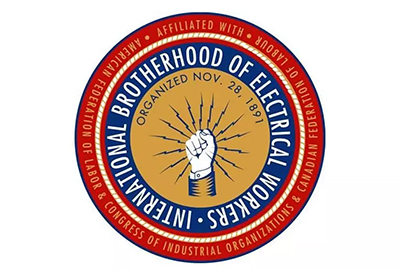

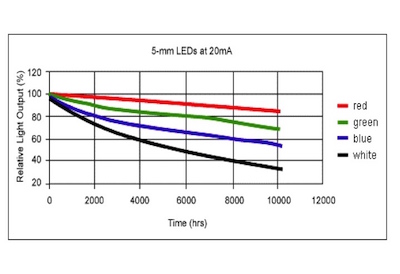
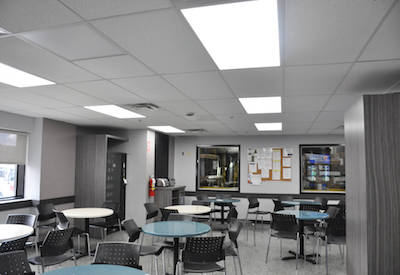


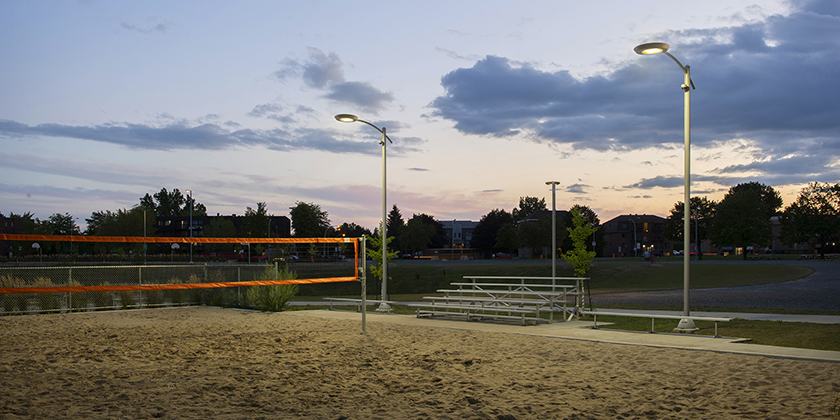
![Guide to the Canadian Electrical Code, Part 1[i], 26th Edition – A Road Map: Section 10 – Grounding and Bonding](https://electricalindustry.ca/wp-content/uploads/2022/11/Guide-CE-Code-2.png)
